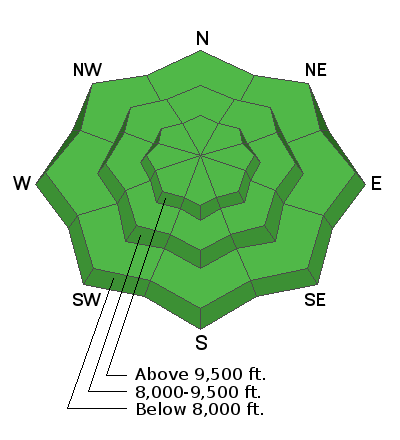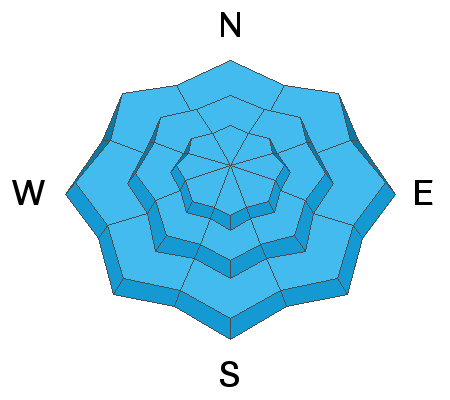Thanks to the generous support of our local resorts and Ski Utah, discount lift tickets are now available. Support the UAC while you ski at the resorts this season. Tickets are available
here.Clear skies and light winds will lead to another beautiful day for the Wasatch Range. Mountain temperatures currently range 25°-32° F with winds blowing from the northwest at 5-10 mph. Expect plenty of sunshine today, with temperatures climbing into the 30's and 40's °F.
I wish I had better news and something exciting to look at in the weather. We indeed set up a more progressive pattern starting tonight with an increase in southerly winds (blowing 15-25 mph) that will lead to partly cloudy skies, no new snow, and colder temperatures. Each storm that rolls through is moisture-starved, and if we're lucky, we will get a few inches by the weekend.
It's been a dry January as the storms and snow stopped back on the 9th when high-pressure became the dominant weather feature. That was followed by 12 days of high pressure (Sunny days with cold and clear nights). On the 21st, we squeaked out 3.5" of snow followed by three more days of high pressure with another 1" of snow on the 25th, followed by another five days of high pressure, with another one on tap for today.
According to the
Collins Study Plot, we will close out the month of January with 29.5" of snow with 4.77" water. Historically, the water number isn't that bad as the first few storms of the month were very wet. However, in terms of snowfall, it's one of the worst Januarys for the Collins Snow Plot that dates back to 1980.
Throughout January, we've seen a total of 20 days of high pressure (that's a lot of cold and clear nights). This high pressure has caused our snow surface to grow weak and faceted during this dry spell (
Cody Hughes Video). It's not an issue now, and we will have to see how the weather plays out before we are too worried. But, I would keep this in mind as we move into February. Once it snows here in the Wasatch, we will likely have very dangerous conditions once again.
Our
Week in Review has been published. You can find it
HERE>
None. You can find all observations
HERE.









